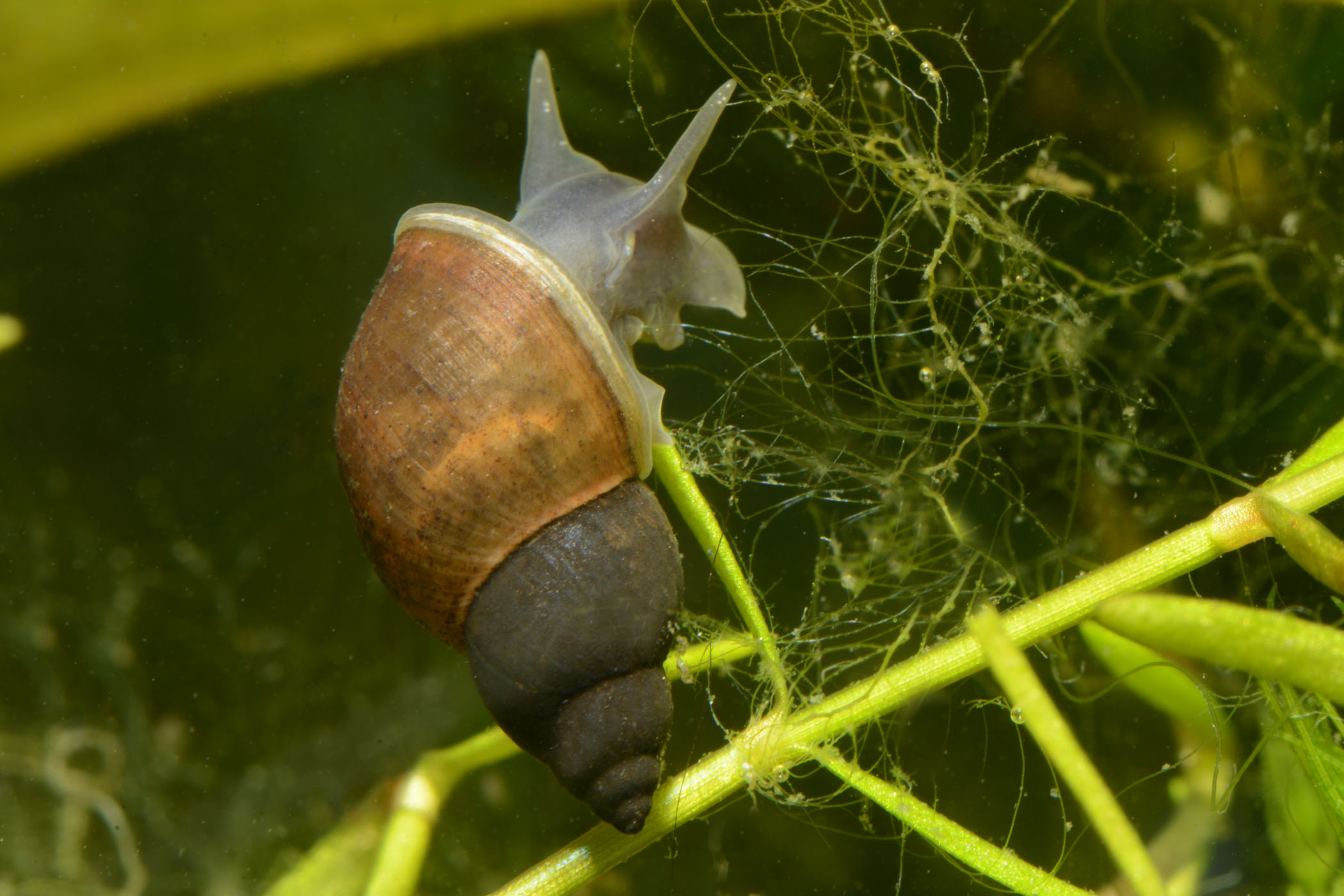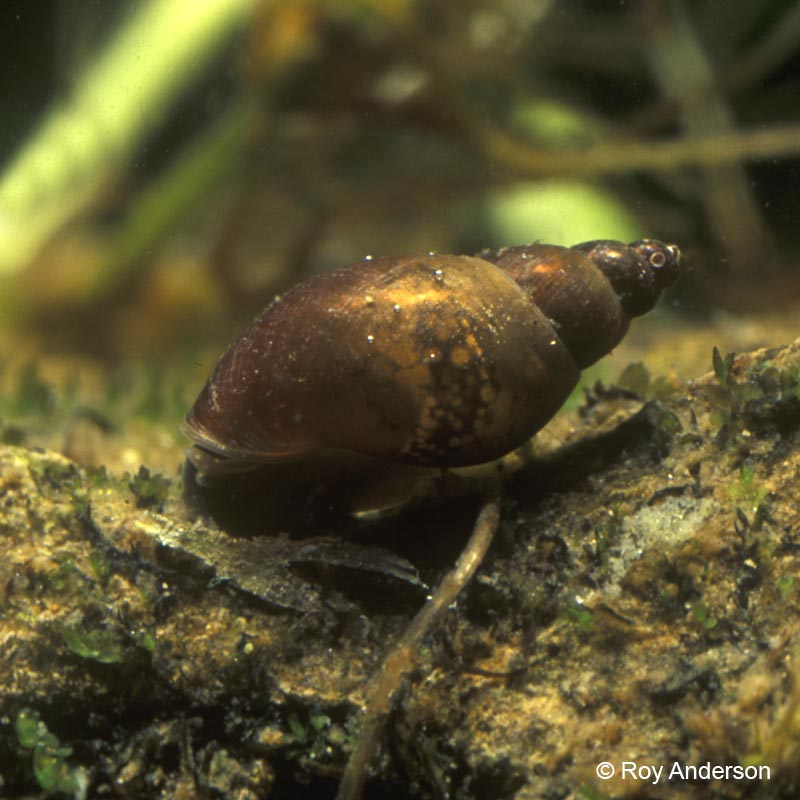| Mollusca : Gastropoda : incertae sedis : Lymnaeidae | Snails and slugs |
Stagnicola fuscus (C. Pfeiffer, 1821)
Marsh pond snail
 |
| Stagnicola fuscus |
Description: An extremely variable species both in size and the convexity of the whorls. Can be a narrow cone with slightly convex whorls and relatively flat sutures or with broader, more convex whorls, and deeper sutures. The radial growth striae cross strong spiral striae and in mature specimens malleation (development of quadrate plates) is often seen. Surface relatively smooth apart from the striae, brown, often with a dark, matt deposit. Common and widespread. 13-24 mm.
World Distribution: The Lymnaea palustris aggregate species is recorded from western Europe to beyond the Arctic Circle and across Siberia. Of the segregate species in this complex, which differ internally but have very similar shells, only S. fuscus has so far been confirmed for Ireland (Carr & Killeen, 2003). Its full range is incompletely known but is likely to be Eurosiberian Wide Temperate (64).
Irish Distribution: The aggregate species is a lowland form commonest in the larger river basins of the central plain and north-east, but extending in places to small hill flushes on the west and north coasts.
Ecology:
- Found at the (flooded) margins of medium to large water-bodies, and in shallow, sometimes temporary habitats
- Unlike Galba truncatula with which it sometimes associates, this species prefers immersion and is amphibious only when temporary water bodies dry out
- Occurs sporadically in smaller water bodies such as interdrumlin fens and neutral to alkaline flushes in coastal areas
Key Identification Features:
- A medium to large, broad to narrow, elongate, cone-shaped brown shell
- Whorls can be slightly to moderately convex but nearly always with flat sutures
- Surface ornamented with strong spiral striae which cross-cut the radial growth striae - in mature shells this can lead to malleation (development of quadrate plates)
- Aperture small, about ⅓ shell height
- Umbilicus closed
Taxonomy:
- The Lymnaea palustris 'rassenkreis' has not been investigated fully in Ireland. Preliminary studies have confirmed the presence of S. fuscus across northern and western counties. It is the commonest species in Europe. It is possible that L. palustris (Műller) also occurs but this has not been confirmed. Lymnaea corvus (Gmelin), listed by Falkner et al. (2001a) for Ireland based on an examination of shells in the National Museum (pers. comm. of G. Falkner), appears less likely.
Red list status:
- Least concern (lc).
Distribution Map from NBN: Stagnicola fuscus at National Biodiversity Network mapping facility, data for UK.
iNaturalist: Stagnicola fuscus at iNaturalist World Species Observations database.
GBIF data for Stagnicola fuscus | Classification: Gastropoda, incertae sedis, Lymnaeidae, Stagnicola
Thumbnails for genus Stagnicola
| Anderson, R., 2025. Stagnicola fuscus. (C. Pfeiffer, 1821). [In] MolluscIreland. https://www2.habitas.org.uk/molluscireland/species.php?item=111. Accessed on 2025-04-02. |


